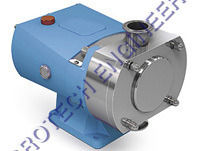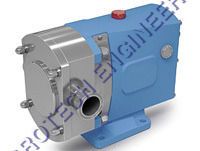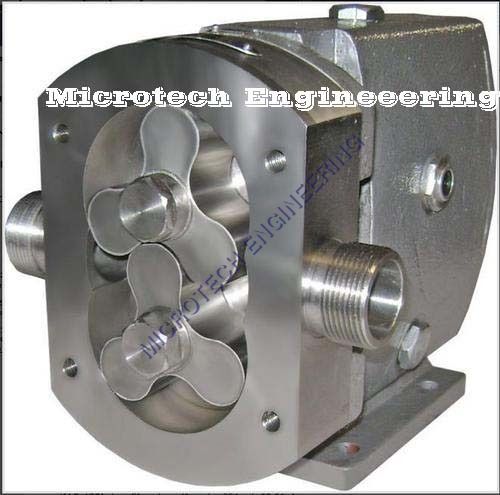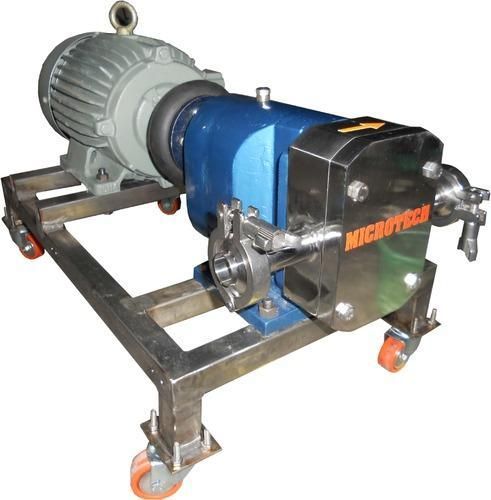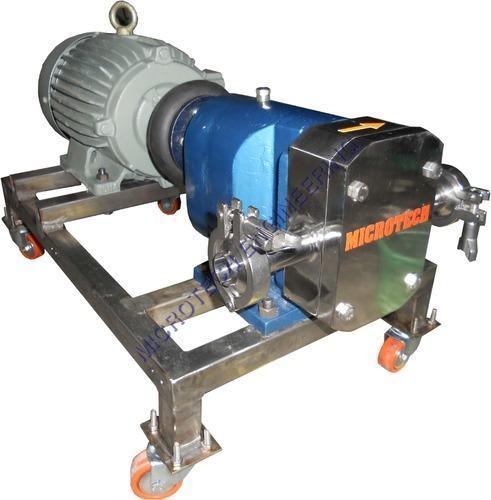
SUGAR SYRUP TRANSFER PUMP
Product Details:
Product Description
SUGAR SYRUP TRANSFER PUMP
Microtech engineering Lobe pumps are used in a variety of industries including, pulp and paper, chemical, food, beverage, Pharmaceutical, and biotechnology. They are popular in these Diverse industries because they offer superb sanitary qualities, high efficiency, reliability, corrosion resistance, and good clean-in-place and sterilize-in-place (CIP/SIP) characteristics.These pumps offer a variety of lobe options including single, biwing, tri-lobe (shown), and multi-lobe.Rotary lobe pumps are Non-contacting and have large pumping chambers, allowing them to handle solids such as cherries or olives without damage. They are also used to handle slurries, pastes, and a wide variety of other liquids. If wetted, they offer self- priming performance. A gentle pumping action minimizes product degradation. They also offer reversible flows and can operate dry for long periods of time. Flow is relatively independent of changes in process pressure, so output is constant and continuous.
How Lobe Pumps Work Liquid flows into the cavity and is trapped by the lobes as they rotate.Lobe pumps are similar to external gear pumps in operation in that fluid flows around the interior of the casing. Unlike external gear pumps, however, the lobes do not make contact. Lobe contact is prevented by external timing gears located in the gearbox. Pump shaft support bearings are located in the gearbox, and since the bearings are out of the pumped liquid, pressure is limited by bearing location and shaft deflection.1. As the lobes come out of mesh, they create expanding volume on the inlet side of the pump
2. Liquid travels around the interior of the casing in the pockets between the lobes
and the casing it does not pass between the lobes.
3. Finally, the meshing of the lobes forces liquid through the outlet port under pressure.
Lobe pumps are frequently used in food applications because they handle solids
without damaging the product. Particle size pumped can be much larger in lobe pumps
than in other Positive Displacement Pump types. Since the lobes do not make contact,
and clearances are not as close as in other Positive Displacement Pump, this design
handles low viscosity liquids with diminished performance. Loading characteristics are
not as good as other designs, and suction ability is low. High-viscosity liquids require
reduced speeds to achieve satisfactory performance. Reductions of
25% of rated speed and lower are common with high-viscosity liquids.
Advantages
Pass medium solids
No metal-to-metal contact
Superior CIP/SIP capabilities
Long term dry run (with lubrication to seals)
Non-pulsating discharge
Disadvantages
Requires timing gears
Requires two seals
Reduced lift with thin
Application
Alcohol - Apple pure Apricots - Baby food Batter Beans Beer Beetroot - Biscuit Cream Blackcurrants Brine Broth -Butter fat Caramel - Castor Oil - Cat food - Cheese curd - Cheese whey Cherries - Chicken paste - Chili con Carne Chocolate Chutney Cockles - Coconut oil - Cod oil Coffee liquor Cordials -Corn oil
- Corn syrup Cottage cheese - Cotton seed oil Cranberry --
- juice - Cream Cream cheese Custard - Dog food Dough Eggs whole - Egg yolk Essences Evaporated milk -Fish - Iodine - ointment etc
Other Products in 'Lobe Pump' category
 |
MICROTECH ENGINEERING
All Rights Reserved.(Terms of Use) Developed and Managed by Infocom Network Private Limited. |

 Send SMS
Send SMS